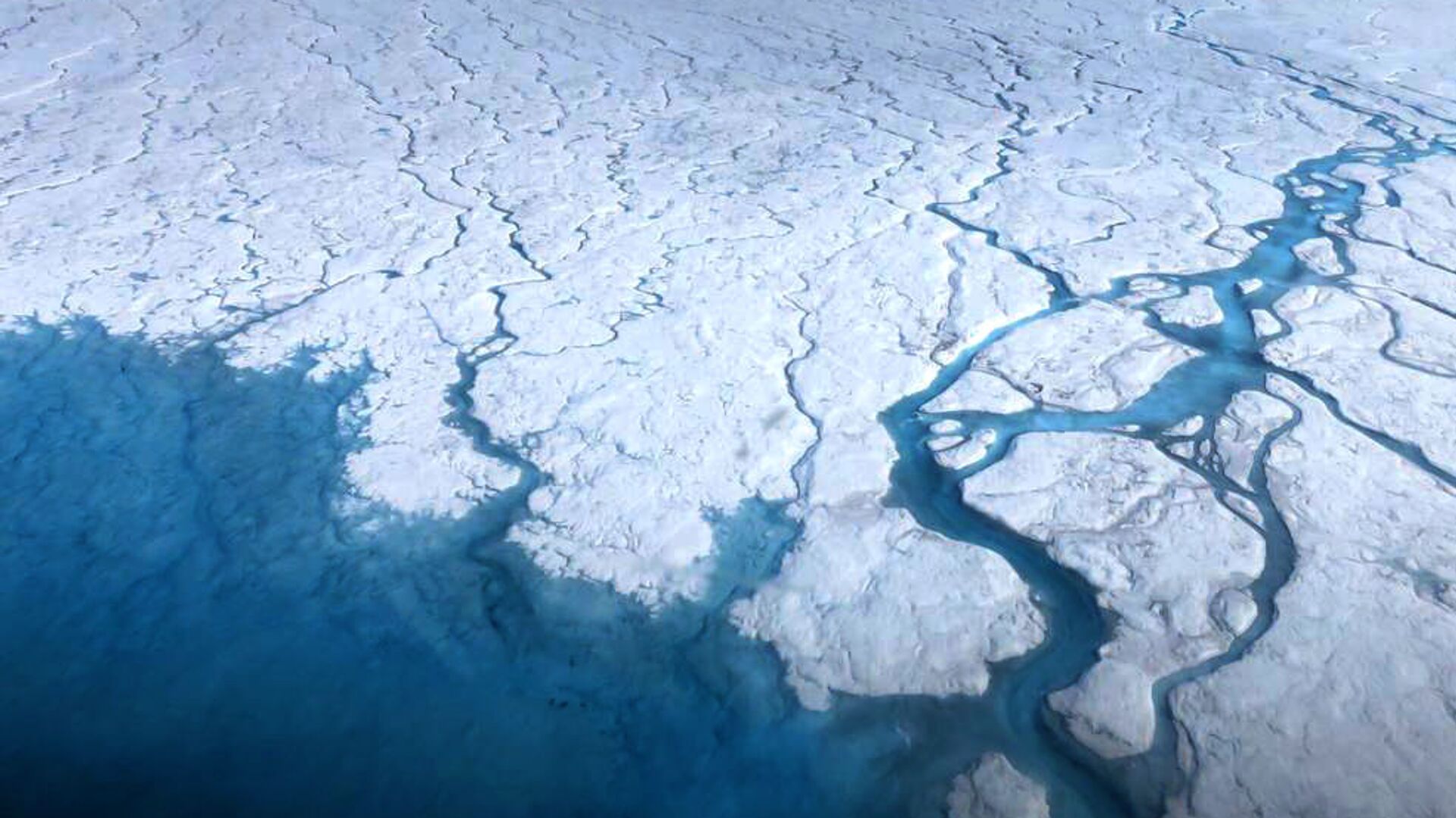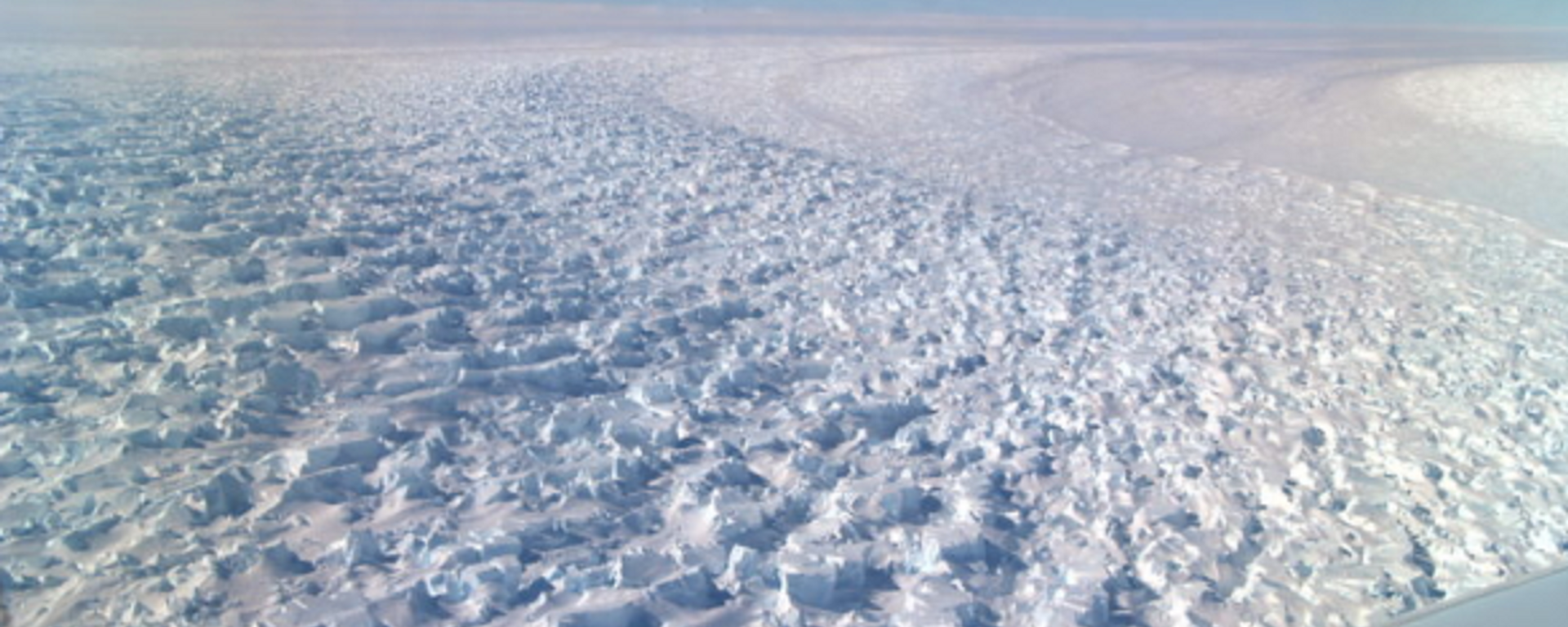https://sputnikglobe.com/20230720/rediscovered-greenland-soil-sample-suggests-warm-wet--largely-ice-free-future-for-planet-earth-1112021556.html
Rediscovered Greenland Soil Sample ‘Suggests Warm, Wet & Largely Ice-Free Future for Planet Earth’
Rediscovered Greenland Soil Sample ‘Suggests Warm, Wet & Largely Ice-Free Future for Planet Earth’
Sputnik International
A sample from Greenland that was collected decades ago has been rediscovered, overturning long-held assumptions about the northerly island that could have disastrous implications for life on our planet in the coming decades.
2023-07-20T21:33+0000
2023-07-20T21:33+0000
2023-07-20T21:30+0000
world
greenland
university of vermont
camp century
ice
core
global warming
https://cdn1.img.sputnikglobe.com/img/07e5/08/1b/1083735397_0:31:985:585_1920x0_80_0_0_6305ed4e4b32d49d0bf1736ee8737b00.jpg
Scientists had long believed Greenland has been covered by ice for millions of years, but the soil sample shows the island was ice-free just 400,000 years ago, during a period in Earth’s history when the climate was comparably warm to the present day.That could mean much more of Greenland’s ice sheet can be expected to melt in the coming years - a catastrophic scenario that scientists previously believed was unlikely this early into man-made climate change. With an ice sheet of 660,000 square miles and an average depth of 0.9 miles, the island holds enough water ice to increase global sea levels by 23 feet if totally melted, although even moderate warming could melt enough ice to increase sea levels by 4.6 feet, the scientists warned.Paul Bierman, a scientist at the University of Vermont and a lead author of the study, told US media the conclusion is “frightening.”“Geologists don’t usually get very upset about what we find,” he said, "but this is really upsetting.”Their startling findings were published in the journal Science on Thursday.The core was originally collected nearly 60 years ago in 1966, when the US Army occupied the Camp Century military base on the island’s northwest. The Pentagon had planned to install a network of nuclear missile silos deep underneath the ice, where it was assumed they would be protected from Soviet strikes, but after the science behind the assumption was overturned and the Danish government refused to consent, the base was abandoned in 1967.The 12-foot-long soil sample was collected after drilling through 4,500 feet of ice and was lost for decades until turning up in Denmark in 2017.Bierman’s team brought back two samples from the core to the University of Vermont for study, and were startled to find as they broke it apart and found twigs, mosses, leaves and seeds.The sediment was deposited some 416,000 years ago, but the scientists have sent the samples to another team at Utah State University that will be able to tell the last time the sediment was exposed to sunlight, indicating when it became entombed in the ice that covers Greenland today.Earlier this month, the Earth shattered a record average temperature not seen in 120,000 years.At the present rate of global warming and polar ice melt, present estimates say that rising sea levels could threaten as many as 630 million people by 2100, including 340 million of whom live on land expected to fall below the high tide line by then.The warming global climate is blamed for the present outbreak of heat waves across much of the northern hemisphere, which has included wildfires. The blazes in northern Canada have been fanned by the hottest-ever recorded temperatures there, including nearly 100 degrees Fahrenheit near the Arctic Circle.Although the world’s nations have agreed on paper to actions that will limit the planet to 3.5-degree Fahrenheit increase in average global temperature, in practice essentially no country is on-target to meet those goals. However, even if they were, still-more-aggressive action might be needed, as many scientists say even that amount of climate change will still be catastrophic.
https://sputnikglobe.com/20230719/italy-braces-for-peak-heat-as-nearly-every-major-city-placed-under-red-alert-1111996205.html
https://sputnikglobe.com/20230607/arctic-seas-may-be-without-summer-ice-in-10-years-time-study-1110970320.html
greenland
Sputnik International
feedback@sputniknews.com
+74956456601
MIA „Rosiya Segodnya“
2023
News
en_EN
Sputnik International
feedback@sputniknews.com
+74956456601
MIA „Rosiya Segodnya“
Sputnik International
feedback@sputniknews.com
+74956456601
MIA „Rosiya Segodnya“
greenland; ice core; soil sample; ice; global warming
greenland; ice core; soil sample; ice; global warming
Rediscovered Greenland Soil Sample ‘Suggests Warm, Wet & Largely Ice-Free Future for Planet Earth’
A sample from Greenland’s vast ice sheet that was collected several decades ago has been rediscovered, overturning long-held assumptions about the northerly island that could have disastrous implications for life on our planet in the coming decades.
Scientists had long believed Greenland has been covered by ice for millions of years, but the soil sample shows the island was ice-free just 400,000 years ago, during a period in Earth’s history when the climate was comparably warm to the present day.
That could mean much more of Greenland’s ice sheet can be expected to melt in the coming years - a catastrophic scenario that scientists previously believed was unlikely this early into man-made climate change. With an ice sheet of 660,000 square miles and an average depth of 0.9 miles, the island holds enough water ice to increase global sea levels by 23 feet if totally melted, although even moderate warming could melt enough ice to increase sea levels by 4.6 feet, the scientists warned.
Paul Bierman, a scientist at the University of Vermont and a lead author of the study, told US media the conclusion is “frightening.”
“Geologists don’t usually get very upset about what we find,” he said, "but this is really upsetting.”
“It’s really the first bulletproof evidence that much of the Greenland ice sheet vanished when it got warm,” Bierman added. “Greenland’s past, preserved in 12 feet of frozen soil, suggests a warm, wet, and largely ice-free future for planet Earth.”
Their startling findings were
published in the journal Science on Thursday.
The core was originally collected nearly 60 years ago in 1966, when the US Army occupied the
Camp Century military base on the island’s northwest. The Pentagon had planned to install a network of nuclear missile silos deep underneath the ice, where it was assumed they would be protected from Soviet strikes, but after the science behind the assumption was overturned and the Danish government refused to consent, the base was abandoned in 1967.
The 12-foot-long soil sample was collected after drilling through 4,500 feet of ice and was lost for decades until turning up in Denmark in 2017.
Bierman’s team brought back two samples from the core to the University of Vermont for study, and were startled to find as they broke it apart and found twigs, mosses, leaves and seeds.
“We have a fossilized frozen ecosystem here,” Bierman said, “And what that meant, of course, is the ice sheet had gone away because you can’t grow plants under a mile of ice.”
The sediment was deposited some 416,000 years ago, but the scientists have sent the samples to another team at Utah State University that will be able to tell the last time the sediment was exposed to sunlight, indicating when it became entombed in the ice that covers Greenland today.
Earlier this month, the Earth shattered a
record average temperature not seen in 120,000 years.
At the present rate of global warming and polar ice melt, present estimates say that rising sea levels could threaten as many as 630 million people by 2100, including 340 million of whom live on land expected to fall below the high tide line by then.
The warming global climate is blamed for the present outbreak of heat waves across much of the northern hemisphere, which has included wildfires. The
blazes in northern Canada have been fanned by the hottest-ever recorded temperatures there, including nearly 100 degrees Fahrenheit near the Arctic Circle.
Although the world’s nations have agreed on paper to actions that will limit the planet to 3.5-degree Fahrenheit increase in average global temperature, in practice essentially no country is on-target to meet those goals. However, even if they were, still-more-aggressive action might be needed, as many scientists say even that amount of climate change will still be catastrophic.






